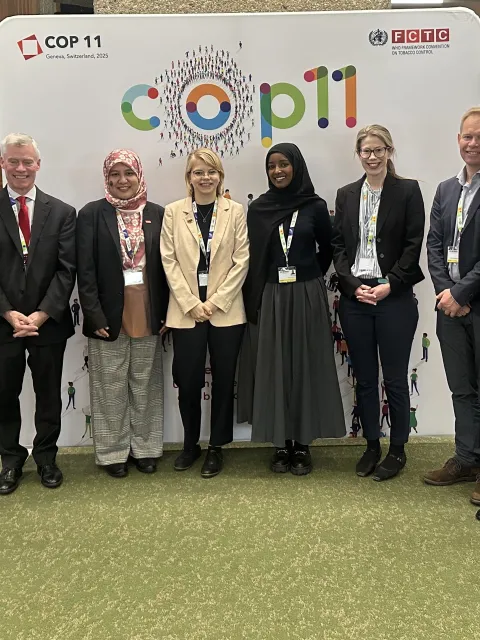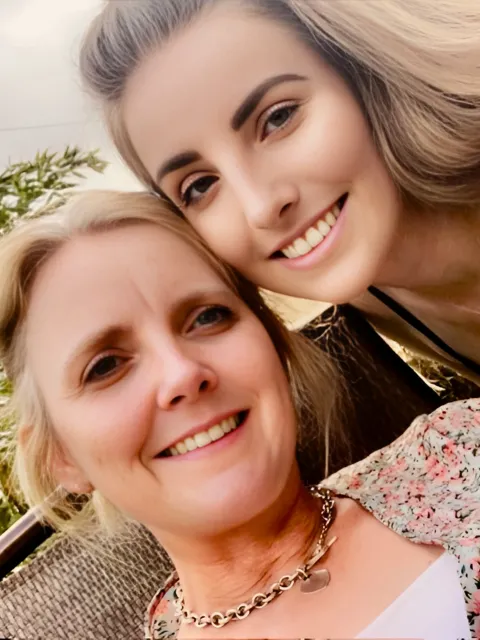Global strides towards cervical cancer elimination
TogetHER for Health’s Executive Director, Heather White, discusses global progress in cervical cancer elimination with UICC, highlighting successes, challenges, and how is driving change.

HIGHLIGHTS
- Significant progress has been made in reducing the number of cervical cancer cases and related deaths in countries where there is strong political commitment and accessible HPV vaccination and screening programmes.
- Disparities persist, particularly in low-resource settings and in underserved populations, where limited healthcare access, vaccine hesitancy, and socioeconomic barriers, among other factors, hinder prevention efforts.
- TogetHER for Health, a UICC member, supports global elimination through grants, advocacy, and regional partnerships, stressing the need for inclusive messaging and public engagement.
Over the past 15-20 years, there has been a significant drop in the number of women newly diagnosed with cervical cancer cases and who have died from the disease – in areas where vaccination and screening programmes are available and accessible.
A study published in 2021, for instance, reported that cervical cancer rates in the UK had dropped by nearly 90% among women who were vaccinated against the human papillomavirus (HPV) as teenagers. The US saw deaths due to cervical cancer plummet by 60% between 2015 and 2021. Australia, Norway and Sweden have seen similar progress.
“We have the tools to eliminate cervical cancer and we are seeing great strides, particularly in the Asia Pacific region,” says Heather White, Executive Director at TogetHER for Health, an organisation dedicated to ending cervical cancer worldwide. “Australia is probably considered the global leader in cervical cancer elimination, but many countries are starting to take this on.”
White says that it is key to have the fundamentals in place. “In 2023, Australia introduced a national cervical cancer elimination strategy and ensured the financing to support these efforts. These include integrating cervical cancer services into the country’s universal health plan, which covers a range of services across the care continuum for cervical cancer.”
Alongside its domestic progress, Australia is also committed to cervical cancer elimination in the wider Indo-Pacific region, notably demonstrated by its investments in the Elimination Partnership in the Indo-Pacific for Cervical Cancer (EPICC) with USD 12.5 million in regional aid. UICC is part of EPICC, providing expertise, networks and tailored support to civil society member organisations through its Cancer Advocates programme.
The adoption in November 2020 of WHO’s Global Strategy to eliminate cervical cancer was a pivotal moment, garnering support from all WHO Member States. Effective strategies and policies include not only vaccinating girls – and boys if possible – aged 9-15 against HPV to prevent the virus from developing and spreading, but also accessible screening programmes to detect and treat early symptoms of cervical cancer, and the treatment of more advanced forms of the disease.
Heather White cautions, however, that progress in addressing cervical cancer varies across regions and countries. “In low-resource settings, where access to vaccination and screening is limited, the reductions in cervical cancer cases and mortality rates have not been as pronounced.” In many countries, notably in sub-Saharan Africa, the disease remains among the top, if not the top cause of cancer-related deaths for women.
While this is also the case in Rwanda, the country is showing signs of progress after rolling out an ambitious HPV vaccination programme in 2011, which achieved high coverage rates through a school-based vaccination strategy, community involvement in identifying out-of-school girls, and a nationwide sensitisation campaign. The country has now announced the launch of Mission 2027, an ambitious plan to meet their elimination targets three years earlier than the 2030 goal.
“Rwanda’s success is attributed to the country’s strong political commitment and accountability at the national level. The government has really taken on the assignment of elimination from an operational perspective and built out a strong foundation at the primary level to meet those targets. This systematic approach has been crucial in their progress, demonstrating that even low-resource settings can make significant strides with the right strategies and political will.”
– Heather White, Executive Director at TogetHER for Health
The journey towards elimination presents considerable challenges, however. Costing for screening and treatment remains a significant hurdle, particularly in low-resource settings. While there is substantial support for HPV vaccination, the screening piece is where it gets challenging.
“We are big promoters of the HPV test because of its cost-effectiveness, but the cost-effectiveness really comes at scale,” White explained. “While health ministries often understand the issue, finance and education ministries need to be convinced. Yet the cost of prevention feels negligible in comparison to the human and social costs of not doing anything.”
White goes on to say, "Vaccines save lives in the future, but screening and treatment are also essential as they save lives now. We just released a joint report with the Commonwealth targeting programmers, governments, and funders, and calling for a holistic approach to the elimination targets instead of a singular focus on vaccination." This report was developed followed an expert session held at UICC's World Cancer Congress in Geneva in September 2024.
Vaccine hesitancy and medical misinformation also hinder progress in efforts to eliminate cervical cancer. “Public health works well when you don't see it. When you avert disease, that’s when we're doing our jobs," White said, emphasising the importance of public health professionals in promoting routine vaccination.
The prevalence of cervical cancer can be affected by socioeconomic factors, such as income level, geographical location, cultural context, ethnicity, age, and sexual orientation, all of which can create barriers to accessing cancer services even when they are available. Cervical cancer disproportionately affects impoverished women in rural communities and those living with HIV, both in high- and low-income settings.
“To overcome stigma and reach women in remote settings, it is vital to create campaigns with inclusive messaging that reaches communities and isn’t just communicated in clinical settings,” White stressed. “Engaging men in the conversation is also important, as in many regions around the world they make healthcare-related decisions for their families. By addressing the social determinants, we can ensure that preventive care reaches those who need it most.”
TogetHER for Health is actively involved in several initiatives to support cervical cancer elimination. Its cervical cancer grants programme provides funding for organisations with innovative approaches to prevention and treatment. The 2023-2024 cycle of grants, for instance, includes Grounds for Health, which is scaling up HPV self-sampling in Kenya, identifying best practices in HPV testing and treatment, particularly in rural settings. Another project, Women Together Global, trained 25 women and girls in Mangochi and Mulanje in Malawi as Cervical Cancer Navigators to educate their communities about cervical cancer prevention and promote new self-collection methods.
TogetHER for Health has also joined the Asia Pacific (APAC) Women's Cancer Coalition, supporting governments to align with elimination objectives in the region. Additionally, TogetHER engages in policy research and advocacy, publishing annual estimates for the funding of cervical cancer prevention, notably in low and middle-income countries.
TogetHER is marking World Cancer Day on 4 February and the new theme ‘United by Unique’ focused on people-centred care with ‘Voices TogetHER’, which aims to spotlight local initiatives and the voices of beneficiaries. “Our campaign highlights the importance of optimism and energy in the healthcare worker space to promote cervical cancer prevention,” says White.
Last update
Friday 31 January 2025
